Wallace Collection Knight Armor
Real knightly armor of the Renaissance. Today we will get to know them in the most detailed way!
"Ivanhoe" Walter Scott
Museum collections of knightly armor and weapons. Today, personally, I have, let's say, a small holiday, which, I hope, will be a bit of a holiday for lovers of antiquity in VO. And it is connected with the fact that we are starting a new series "for life", which will be devoted to individual collections of knightly armor and weapons in museums in different countries. That is, it will be a story about the museum itself, where these items are exhibited, and about those of its exhibits that will be presented in the text as illustrations. No wonder it is said that there is nothing more interesting ... useless knowledge, because you usually rest on it. So here it will be told about the piles of completely useless, but remarkably beautiful ancient iron. And I promise that all the photos shown here will be ... very nice to look at. Well, then, what if one of us gets rich enough that he wants to decorate his house with real knightly armor - so there will be something for him to be guided by. And who knows, or rather, who knows his life path - maybe this will happen someday ...
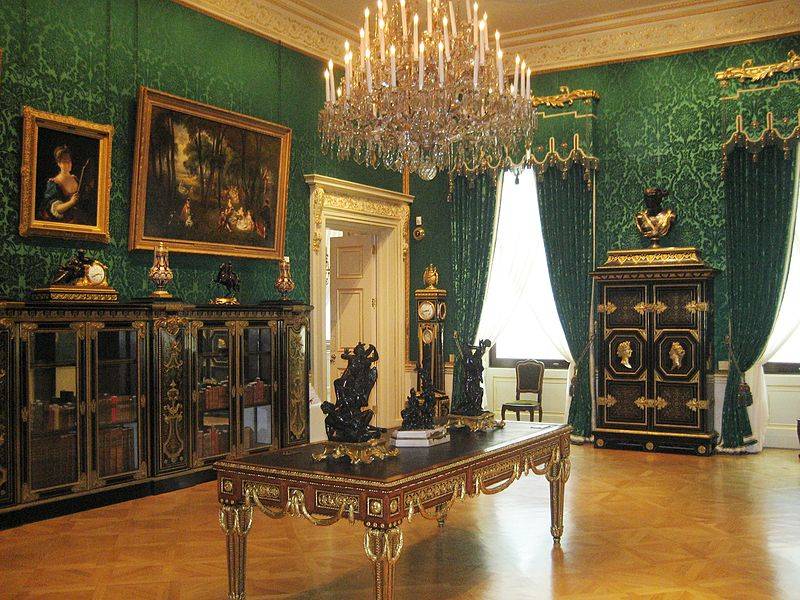
Already the interiors of the museum are truly luxurious and contain excellent examples of applied art. For example, the Large Living Room. It presents a number of works by the French master furniture maker André-Charles Boulle
Well, let's start with the wonderful collection of armor of the Wallace family, which is usually called the "Wallace Collection" in Russia. It is located in a three-story mansion on Manchester Square in central London in the Westminster administrative district. And it was opened to visitors back in 1900, that is, it is already 121 years old, and all this time its treasures never cease to please the eye. It was collected by four generations of the Wallace family between 1760 and 1880 and today it consists of about 5500 objects of both fine and decorative arts of the 25th-XNUMXth centuries, a collection of paintings from the XNUMXth century ... Louis XV furniture, European and Oriental weapons and armor, Sevres porcelain, many canvases of various master painters - from Titian, Rembrandt and Rubens to Antoine Watteau and Nicolas Lancre. Moreover, you can visit the "Collection" completely free of charge, such was the will of the testators, who provided the collection to the full ownership of the state. Her treasures are displayed in XNUMX galleries. But today, since we have a military site, we will visit only one: weapons and armor.
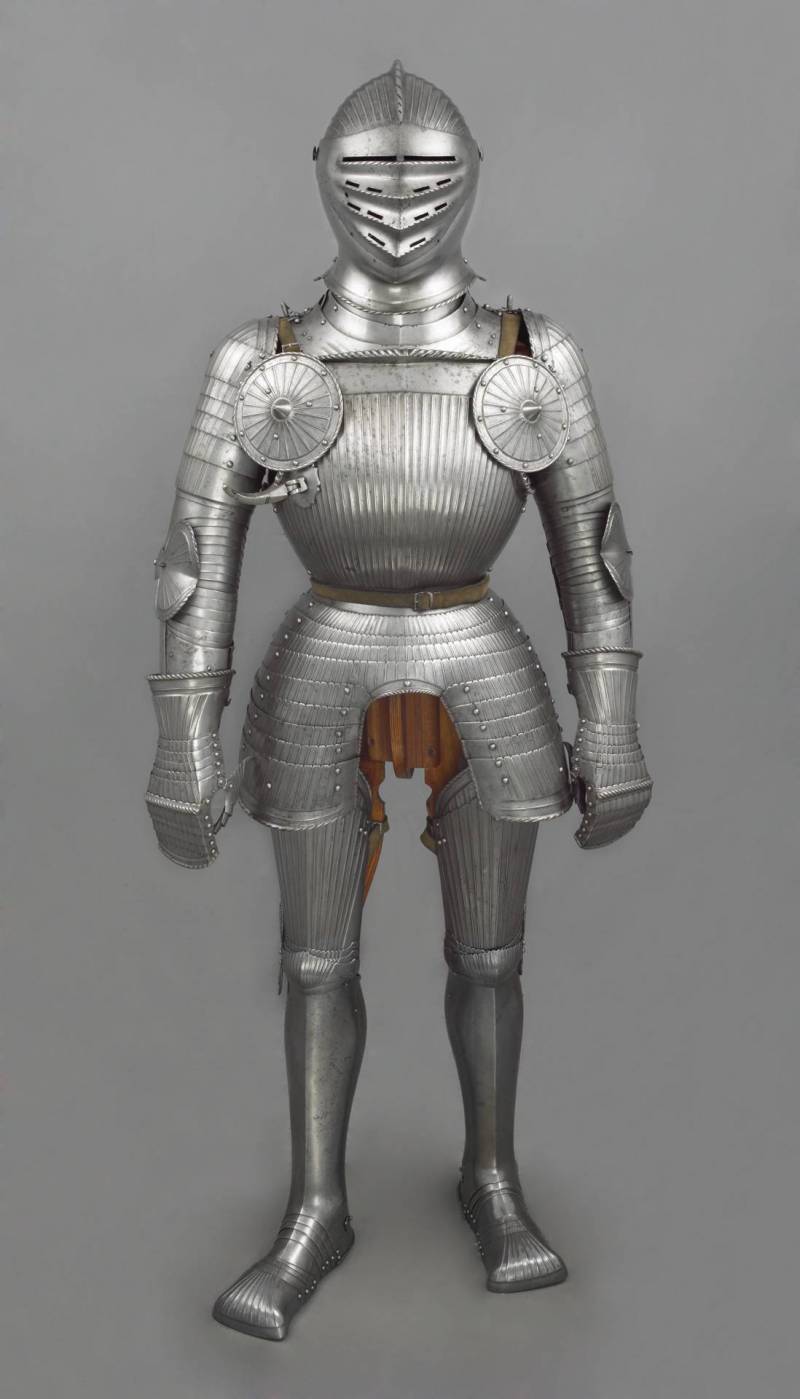
From this sample, we will get acquainted with the armor of the Wallace Collection. Before us is a field armor made in the "Maximilian style" in southern Germany, c. 1515-1525 As you can see, this armor's shape and functionality go hand in hand. The steel plates have to fit very tightly to the body so that they create a kind of "exoskeleton". This technical requirement immediately translates such armor into the realm of sculpture, as it takes on an elegant and graceful silhouette of a slender human body. (c) Wallace Meeting Board of Trustees, London
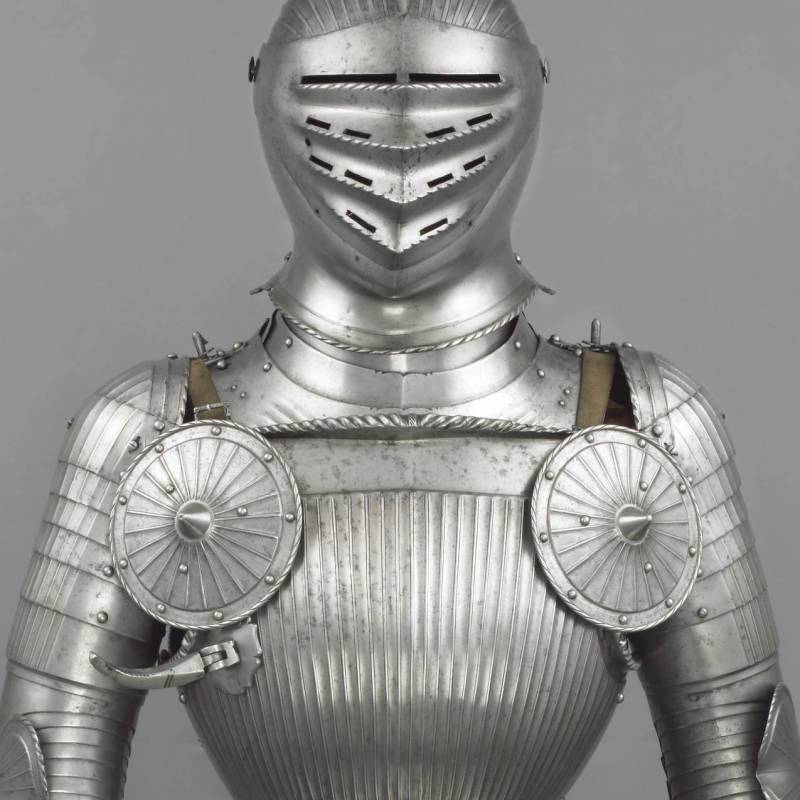
These round plates on the armor that covered the armpits were called besagyu. And even here they are grooved so that ... the style of the armor is uniform. (c) Wallace Meeting Board of Trustees, London
The customer wanted to get a unique armor, but so that it was no worse than others, and the master, of course, tried to please him. This armor, with its exquisite abundance of corrugated surfaces, is the finest of a series of samples of the "Maximilian style" in the Wallace collection. By the way, we recall that this style was born not without the participation of the German Emperor Maximilian I (1459-1519), who was both a wonderful knight and the greatest patron of the German Renaissance.
In the articles here on VO, it was already said that over time, the armor became so expensive that even kings could not afford to order 2-3 armor - one for ceremonial exits, another for combat, and the third for tournaments. So, more economical, let's say, "headsets" appeared, that is, sets of parts that made it possible, without altering the armor itself, to quickly change its functionality.
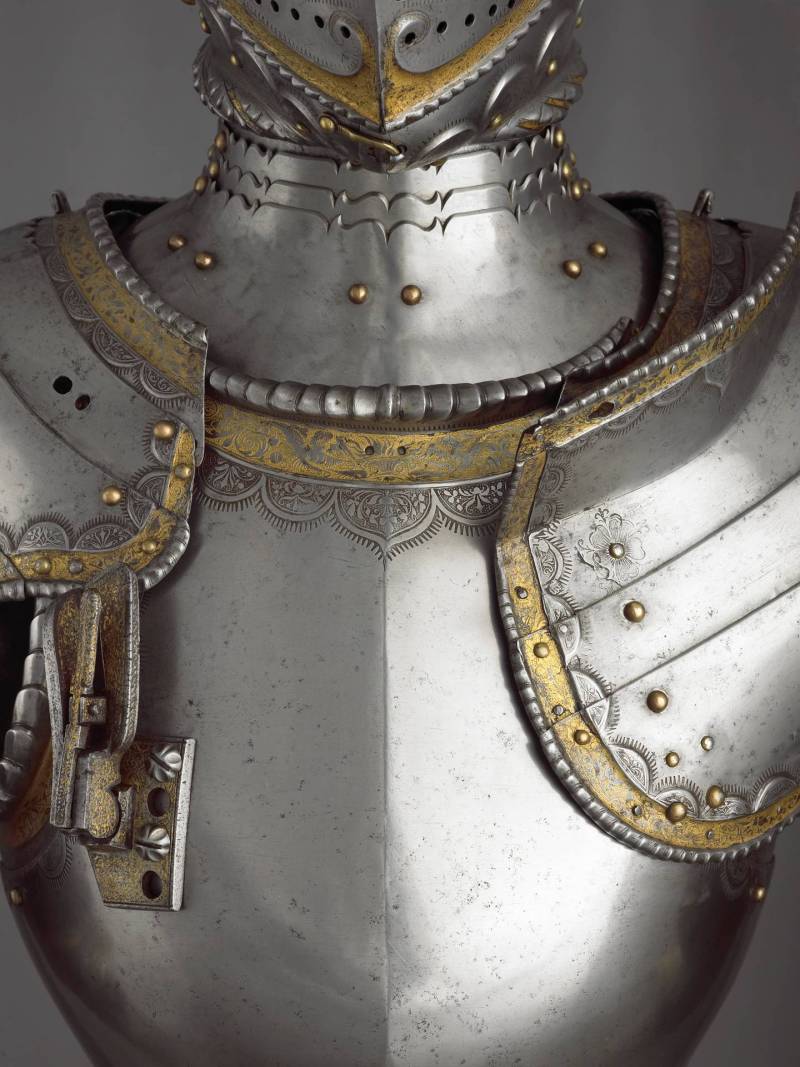
Here, for example, one such set by the master Kohlmann Helmschmid from Augsburg, approx. 1525-1530 (c) Wallace Meeting Board of Trustees, London
How to distinguish - is it combat armor or ceremonial? It's very easy. On the combat shell on the left (or right, depending on where to look) there was always a lance hook or stop, which made it possible to hold a heavy spear in his hands. This piece of armor is complex and can be folded.
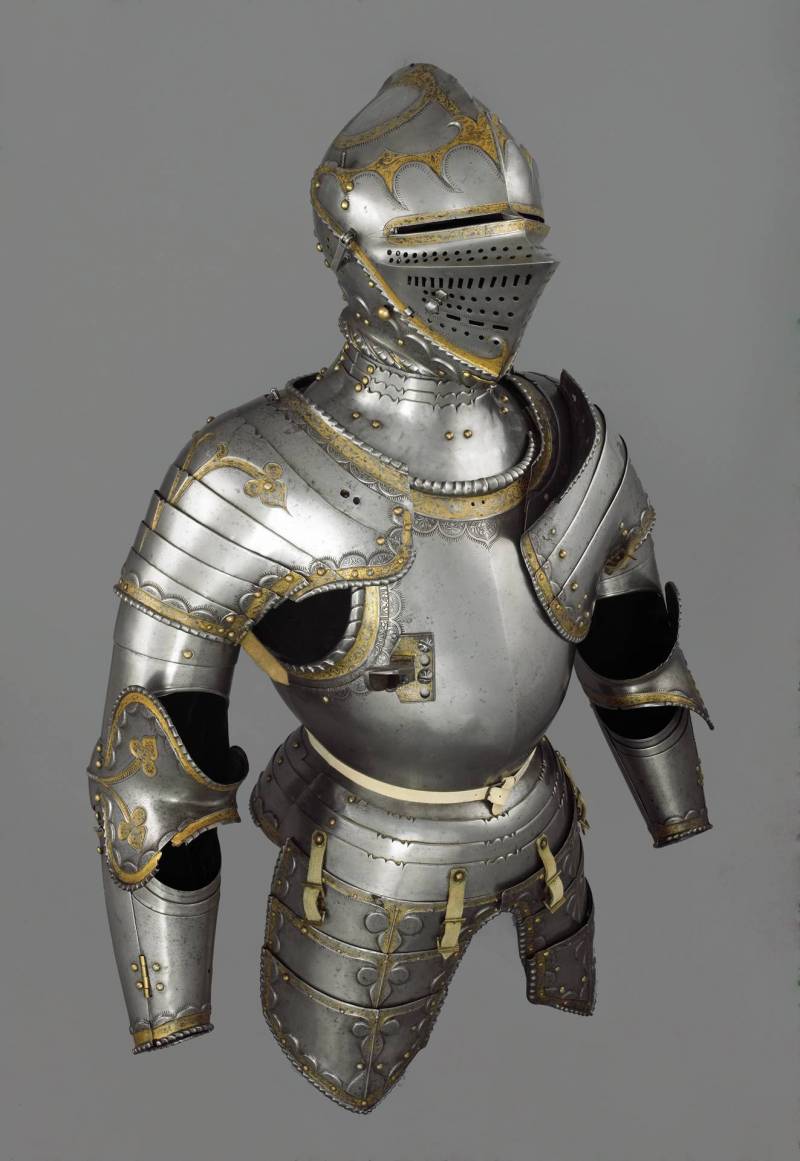
Now look: the armor is combat, but how exquisitely and abundantly decorated it is. (c) Wallace Meeting Board of Trustees, London
No wonder Kohlman Helmschmid is considered one of the greatest gunsmiths of all time, he created such elegant armor - downright clothes of polished metal. For generations, the Helmschmids were court armourers of the Habsburg emperors, the most powerful aristocratic dynasty in stories Europe. Their work can always be distinguished by the combination of technical excellence with the highest quality engraved and gilded decor.
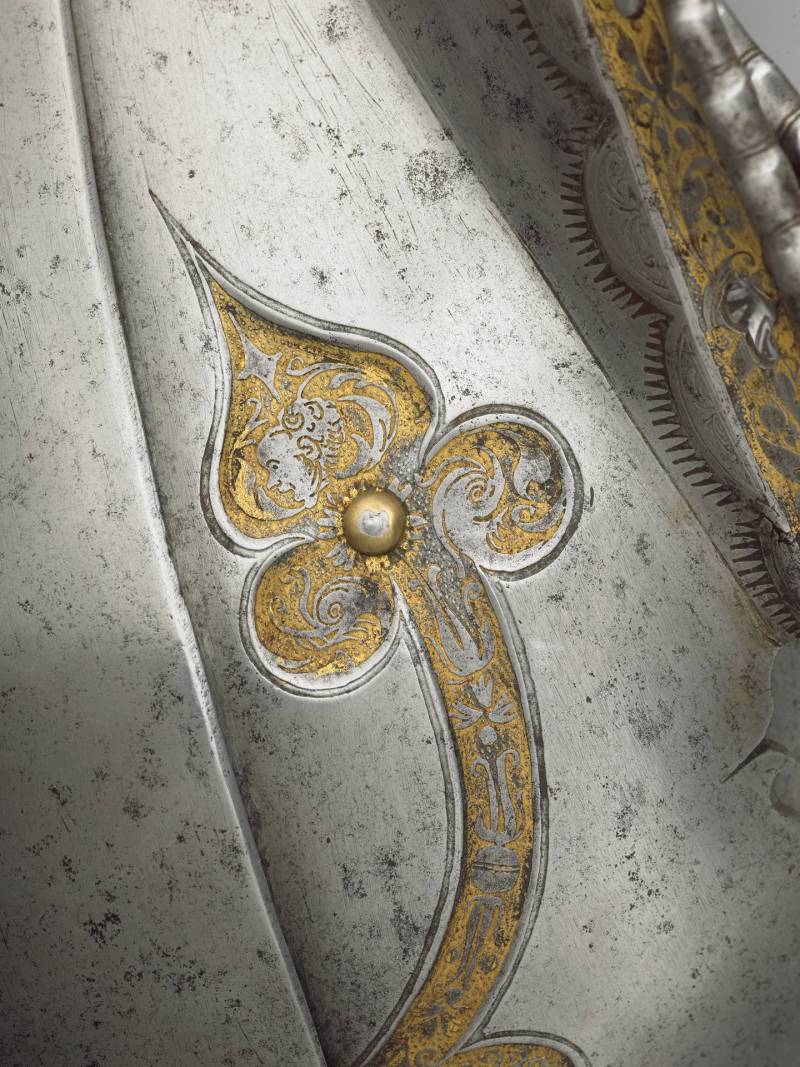
The floral motif is very simple, but how exquisitely finished these patterns are inside! (c) Wallace Meeting Board of Trustees, London
Not only knights wore armor at this time, but also landsknechts - hired soldiers from the German principalities. Their life was harsh, their morals were rough and cruel, and therefore they dressed provocatively, in the style of "lush and cut": clothes, distinguished by the study of cuts and tears received in battle, so that you can see the landsknecht (and understand who is in front of you!) could be from afar. But, as in the case of sailors and prisoners who covered their bodies with tattoos, the fashion for which even penetrated the royal palaces, the clothes of the landsknechts, in fact, the dregs of society, became popular in high society.
So, even armor (!) With a complex and thoughtful decor, created by a combination of chasing, etching and gilding, began to be ordered "for the landsknecht". So this armor, and quite military, was made, most likely, for a nobleman, the commander of the professional infantry of the Landsknechts.
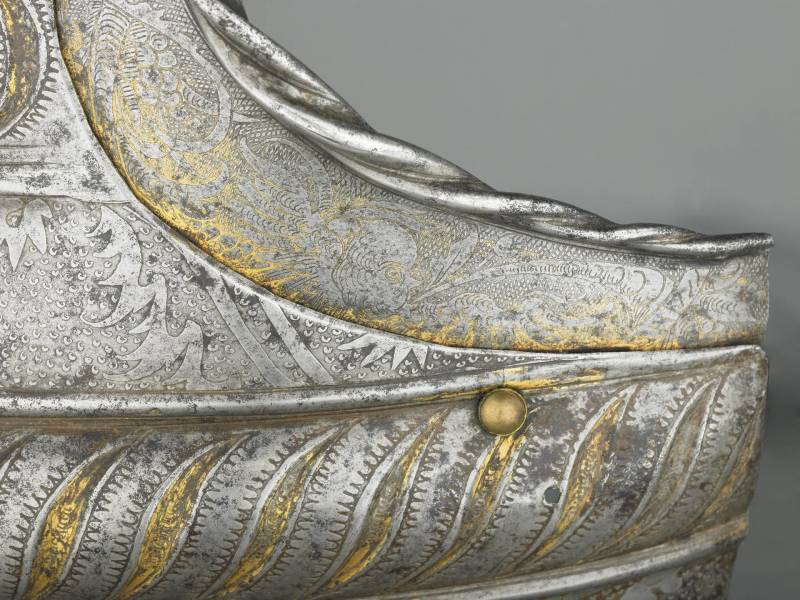
And here there is twisted metal, etching, and gilding. This armor cost a lot to the customer! (c) Wallace Meeting Board of Trustees, London
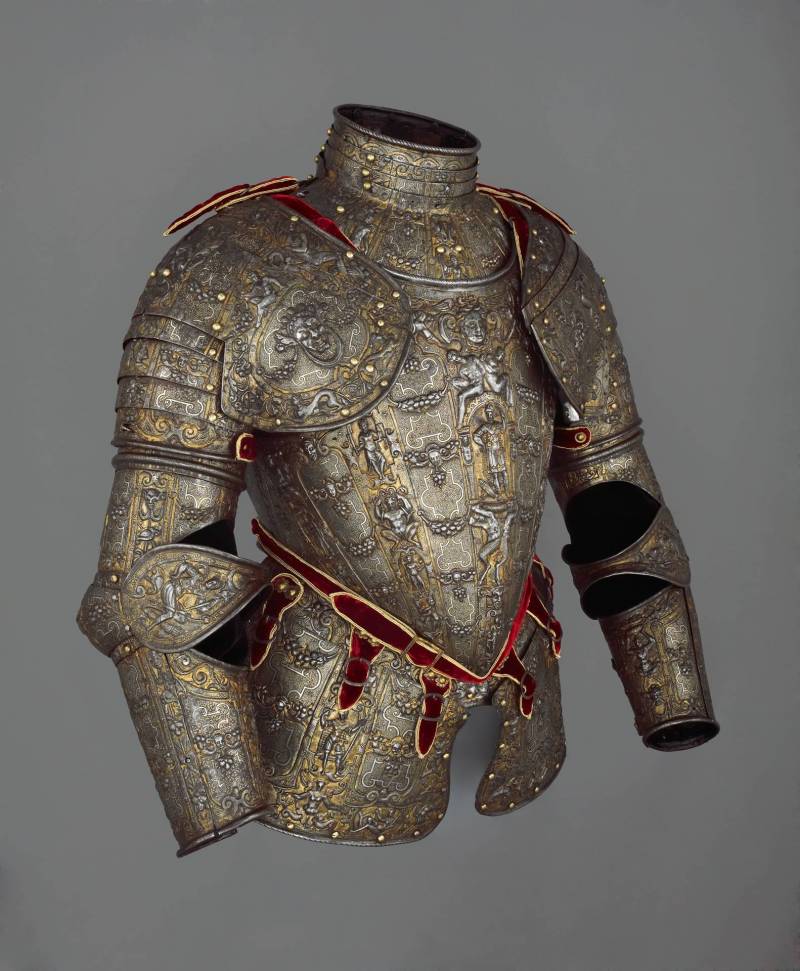
Well, this one is already purely ceremonial armor of the Milanese master Lucio Marliani, nicknamed Piccinino (1538-1607). He made this armor somewhere around 1570-1590. Materials and techniques: very low carbon steel, gold, silver, copper alloy, leather, gold braid and velvet, embossing, gilding and blackening. Weight of the part shown in the photograph: 10,9 kg. (c) Wallace Meeting Board of Trustees, London
It is believed that they belonged to Alfonso II, Duke of Ferrara, Modena, Reggio and Chiaxtres [Chartres], Prince Carpi, Count Rovigo, Lord Kommachio, Garfagnana, etc. Piccinino does not have signatures on them, but they are very similar to the armor made by him for the Duke of Parma, who are in Vienna. There is armor of his work in other museums, including our Hermitage.
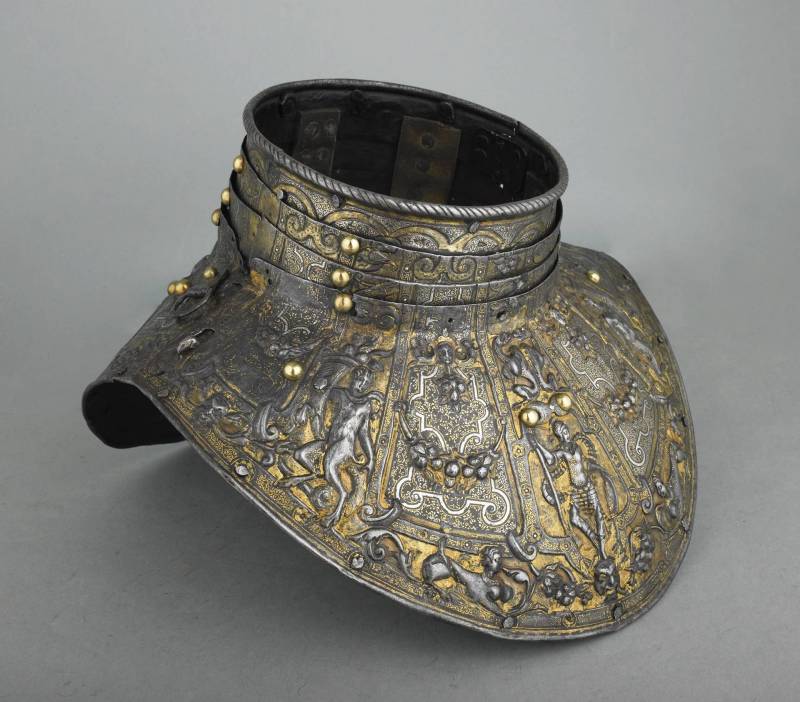
Gorget: made of two main plates (front and back) and a high collar of three plates, fastened with a pin and a hairpin; upper - metal weaving of the "rope" type; the main part (in front) is decorated with an image of a Roman soldier, flower garlands and figures of two satyrs holding cornucopias, and (behind) a seated female figure holding a bowl of fruit, and satyrs playing on both sides; on the shoulders there are two loops for the shoulder straps. Such is quite peaceful, one might even say frivolous decor for this armor! (c) Wallace Meeting Board of Trustees, London
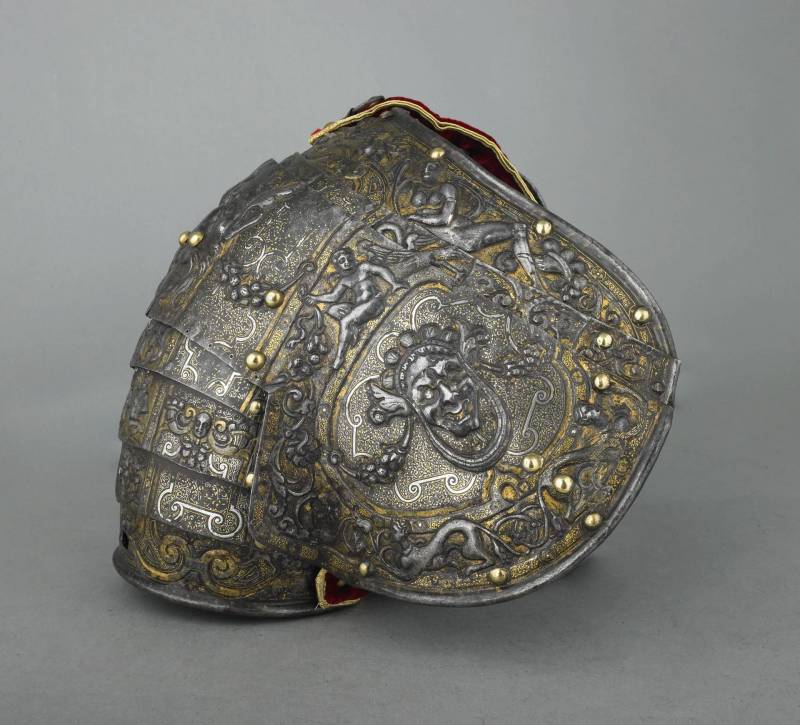
Shoulder pad: grinning faces of satyrs, winged cupids, garlands of flowers - everything is woven into a whimsical pattern, as if saying: "Look, you see the hand of the master!" (c) Wallace Meeting Board of Trustees, London

Just "pipes", here are the pipes and that's it - the British called these pieces of armor "tubes". Although there is another name: bracers, and all of them are hinged, and the inner part of the elbow pad is made in the shape of a heart, thanks to which it protects the bend of the hand well; and all these details are decorated with masks, figures, fruit garlands and ennobled with gold and silver. (c) Wallace Meeting Board of Trustees, London
Usually, readers of articles "about knights" constantly ask questions about how much that weighs in a knight's armor. Well - the Wallace collection has done a similar study of one of their most beautiful Renaissance armor, by Pompeo della Cesa (c. 1537-1610) from Milan, c. 1590 (c) Wallace Council of Trustees, London
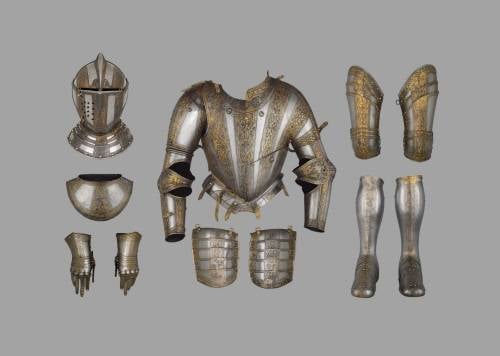
Here are the details of this armor. Material and manufacturing technologies: steel, gold, leather and copper alloy, etching and gilding. Weight: 3 kg helmet, 3,87 kg bib, 0,94 kg shoulder pad (left), 1,08 kg shoulder pad (right), 1,57 kg bracer (left), 1,38 kg bracer (right), 1,21, 0,93 kg legguard (left), 2,94 kg legguard (right), 0,61 kg grangard - patch armor (left), 0,35 kg gorget, XNUMX kg additional armor of the lower part of the bib (left). (c) Wallace Meeting Board of Trustees, London
If we consider armor not only as a weapon, but also as a system of signs, which, however, has always been clothing, then the most ... important message that the armor of the Renaissance contains is strength and beauty. Polished surfaces reflect sunlight, and therefore the armor directly radiates "divine power" bestowed by God himself on the knighthood.
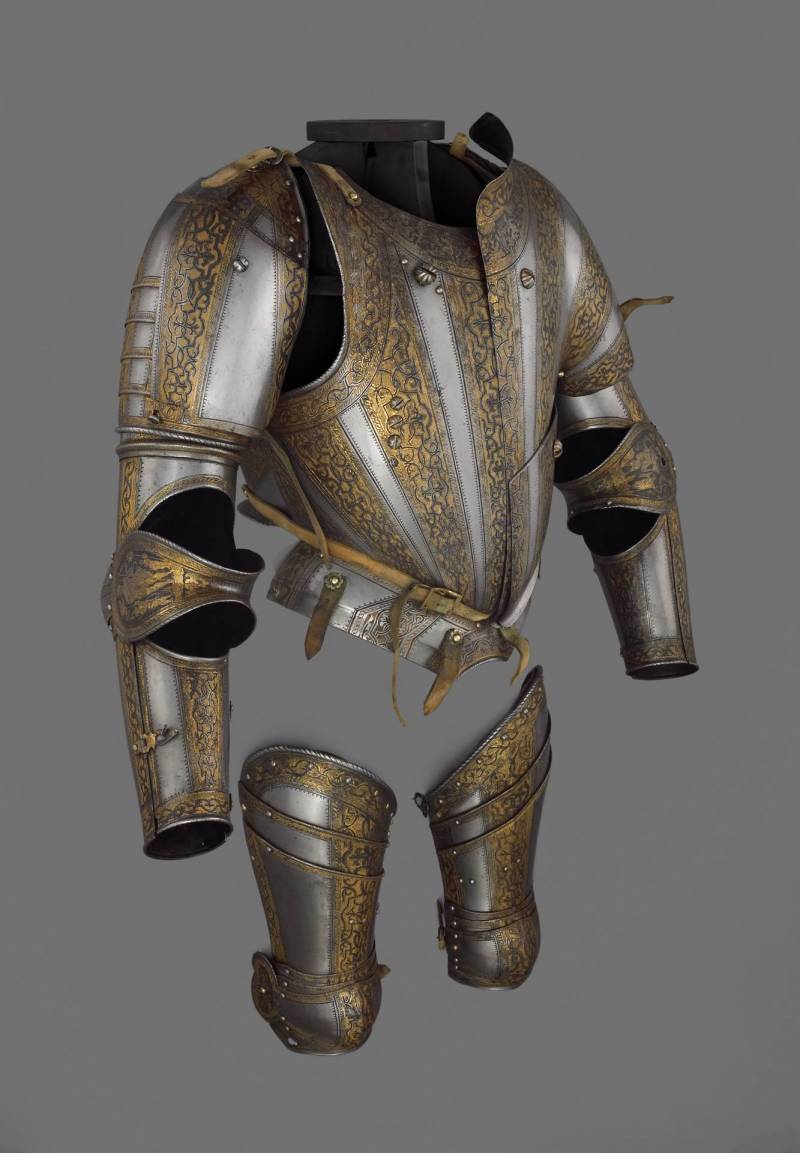
"Where is the spear rest?" - experts will ask and they will be right. But you should take a closer look and see that he just was. But the holes for its fastening are screwed. (c) Wallace Meeting Board of Trustees, London
Well, this power was demonstrated not only on the battlefield, but also in exquisite battles - knightly tournaments. Moreover, tournament armor was very different from combat. Or, additional details were made for the combat ones, which turned them into tournament ones. So the cuirass of this armor has two-layer reinforcement; it can be hit right at the gallop with a long heavy spear without injuring the owner.
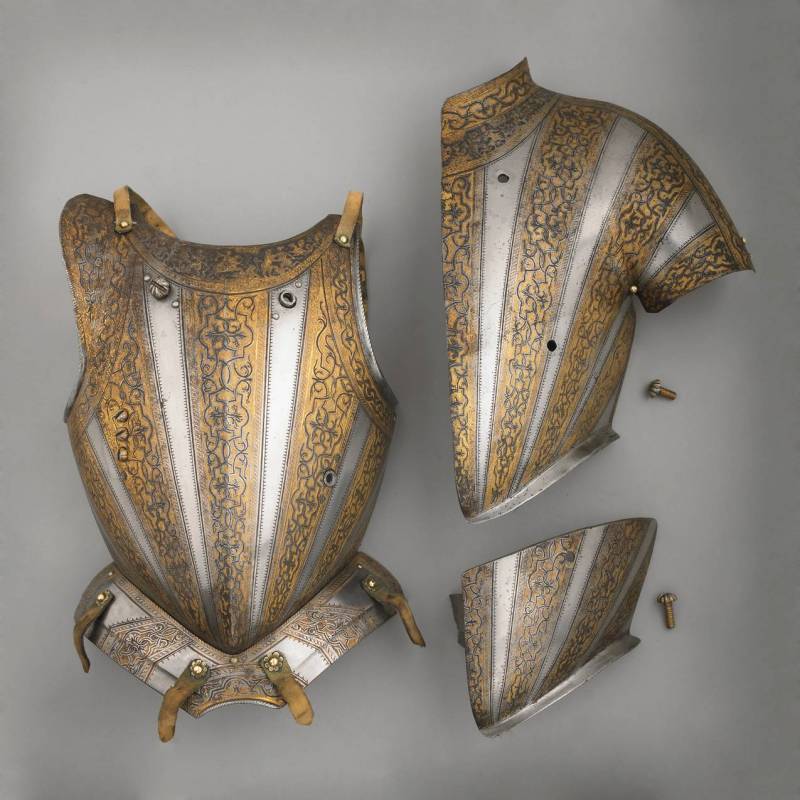
In the armor, the entire left side is armored with additional plates, and they were fastened with screws. So spaced out booking was known even before tanks! (c) Wallace Meeting Board of Trustees, London
The breastplate is signed by the manufacturer POMPEO, which is a rare example of a gunsmith's signature.
Another way in which the European aristocracy reinforced the idea of superiority was to establish connections between themselves and the heroes of ancient mythology and pseudo-history. For example, many Italian Renaissance families claimed descent from classical figures such as Hector, Achilles, and Hercules. In other parts of Europe, false family lines have been invented, dating back even to characters from the Old Testament.
As the Renaissance fascination with everything related to the Ancient World spread throughout Europe, artists quickly developed a complex language of appropriate iconography and design to visualize this modern communication with the distant past. For their part, the armourers developed an "antique or heroic" style based on a careful study of ancient Greek and Roman armor design, complemented by an admixture of their pure and sometimes completely unbridled imagination.
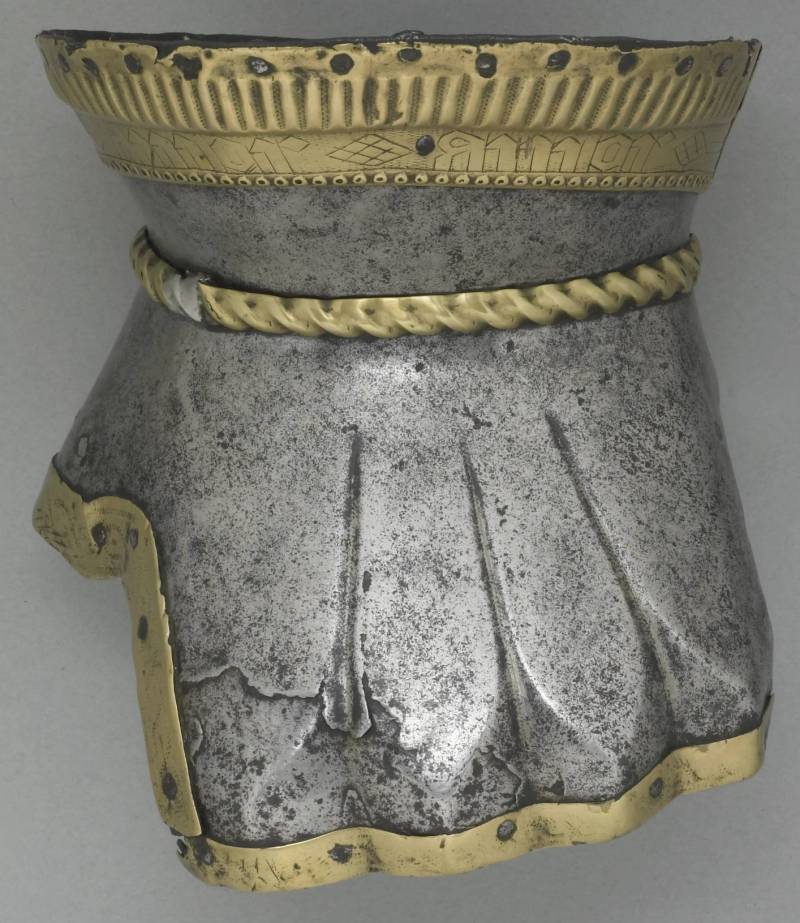
A wonderful example of knightly plate "gloves". Milan, Italy, approx. 1390 Materials: tempered medium carbon steel and copper alloy. Weight: 0,44 kg. Several pairs of such gloves are known: a pair at Kurburg Castle in South Tyrol, which closely resembles Wallace's pair, although perhaps a little more decorative. Even more luxurious is the pair from the Bargello Museum in Florence, which, in addition to the borders, also has four copper alloy ribs on the back of each glove, corresponding to the four metacarpals. (c) Wallace Meeting Board of Trustees, London
Not only that, the rulers of the Renaissance revived the Roman tradition of the triumphal entrance, the showy parade of a victorious army. For such events, fantastically ornate armor was created, such as this embossed and gilded helmet, adorned with leaves and the grinning face of a forest spirit.
Many renowned artists and designers, including Uccello, Botticelli, Durer, Burgkmayr, and Holbein, have collaborated with gunsmiths, designing jewelry designs for rich armor and even helping to create completely new and highly original styles.
By 1500, an incredible number of different metalworking methods had been developed, and all of them were applied to armor. Some of them were very ancient. Others are completely modern. For those years, of course.
The basic forms of the armor could be enhanced by surface decoration. The acid etching process at the beginning of the 1485th century was completely new and allowed for the first time to decorate hard carbon steel with what at first glance looks like an engraving. But it must be remembered that the mechanical engraving of hardened and tempered medium carbon steel armor, while not impossible, was extremely difficult and time consuming. For most of the Middle Ages, engraving was usually done on strips of softer copper alloy or silver, which were then riveted to steel plates to form decorative borders. The invention of etching with aggressive chemicals in XNUMX (apparently in Flanders) made it possible to cover armor surfaces with patterns anywhere and not limit their area.
The main etching technique was to apply an acid-resistant coating called resist, based on wax or bitumen, to the metal surface to be decorated. Then the alleged image was scratched on it to metal, which was then immersed in an acid or etchant. The drawing thus “gnawed” into the plate, without any expenditure of heavy manual labor on the part of the master.
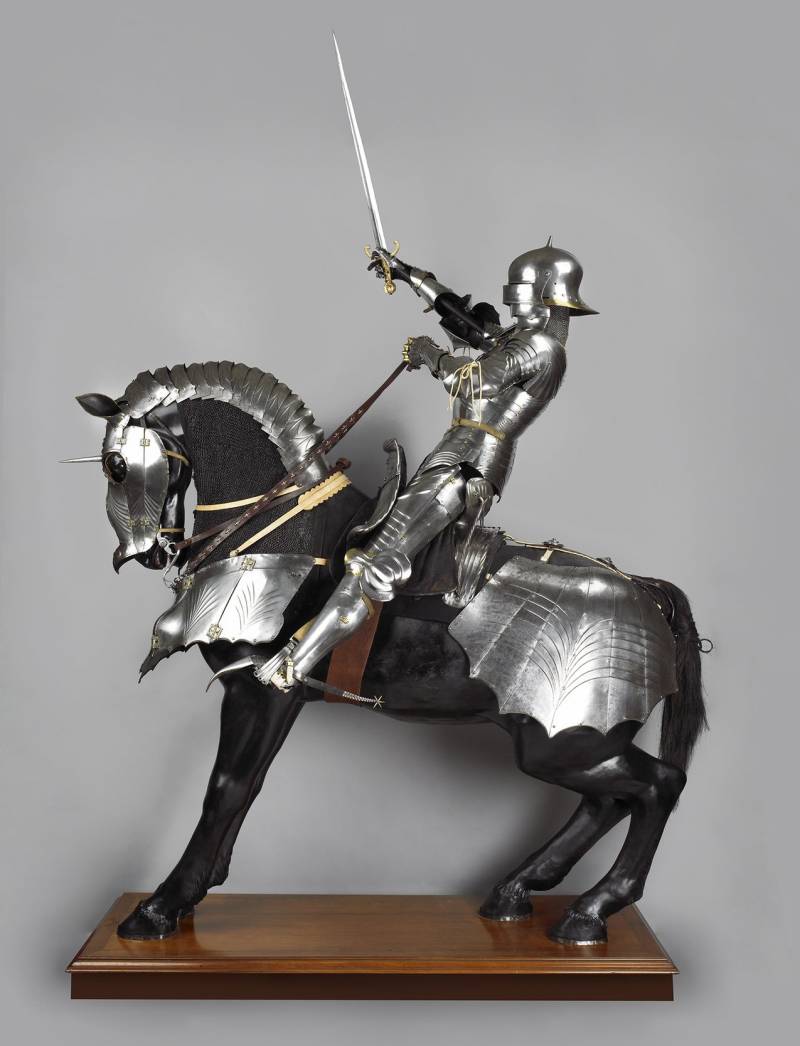
Well, this armor for the rider and the horse is considered a "highlight", or rather, a "pearl" of the Wallace collection. Perhaps they were made by Ulrich Rambs, a gunsmith from Germany, Landshut, c. 1480 Materials and technologies: iron, low-carbon and medium-carbon steel, leather, felt, canvas, wood and copper alloy: corrugation, perforation, notching, embossing, engraving, etching. The mass of the armor for a person is 27,161 kg. The weight of the armor for a horse is 30,07 kg. (c) Wallace Meeting Board of Trustees, London
This concludes our visit for today, but we will continue it to look at some more completely unique armor from this collection.
PS The author and the site administration would like to express their deep gratitude to the Board of Trustees of the Wallace Meeting represented by the head of the communications department Kathryn Havelock for the opportunity to use materials and photographs from the collection's funds.
To be continued ...
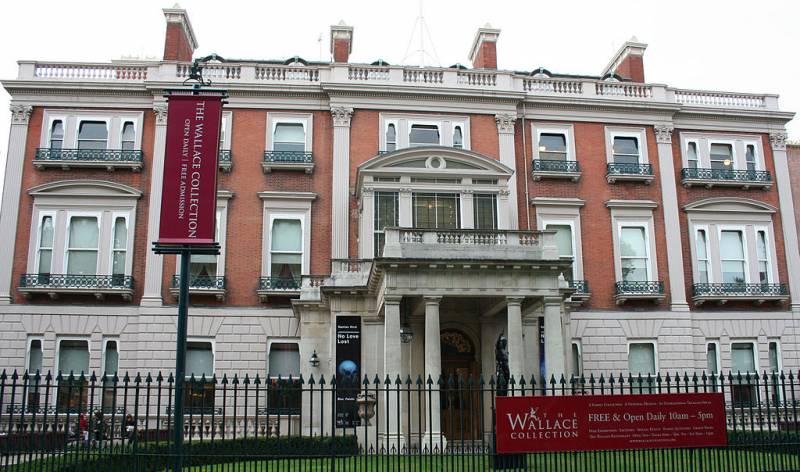
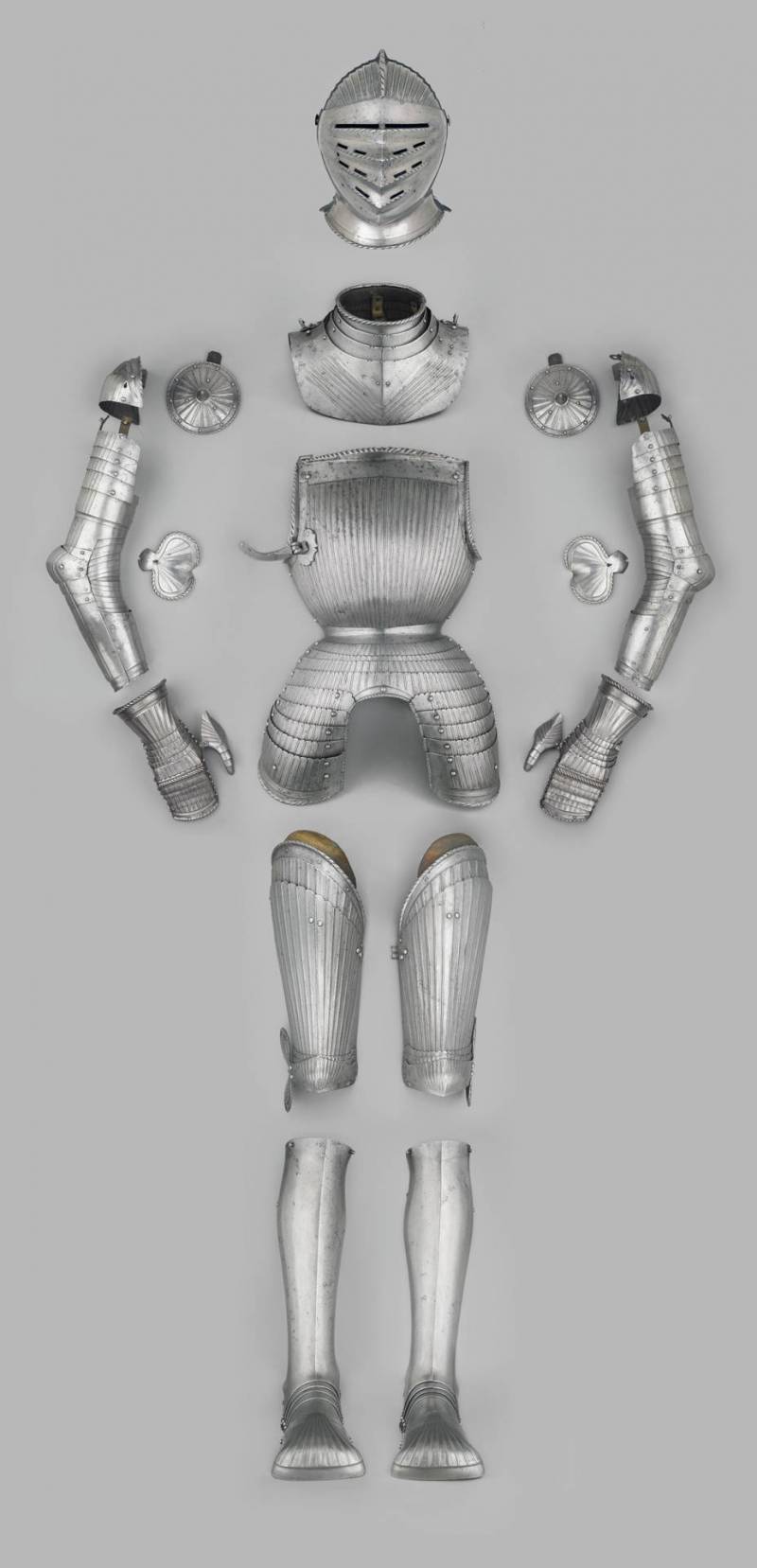
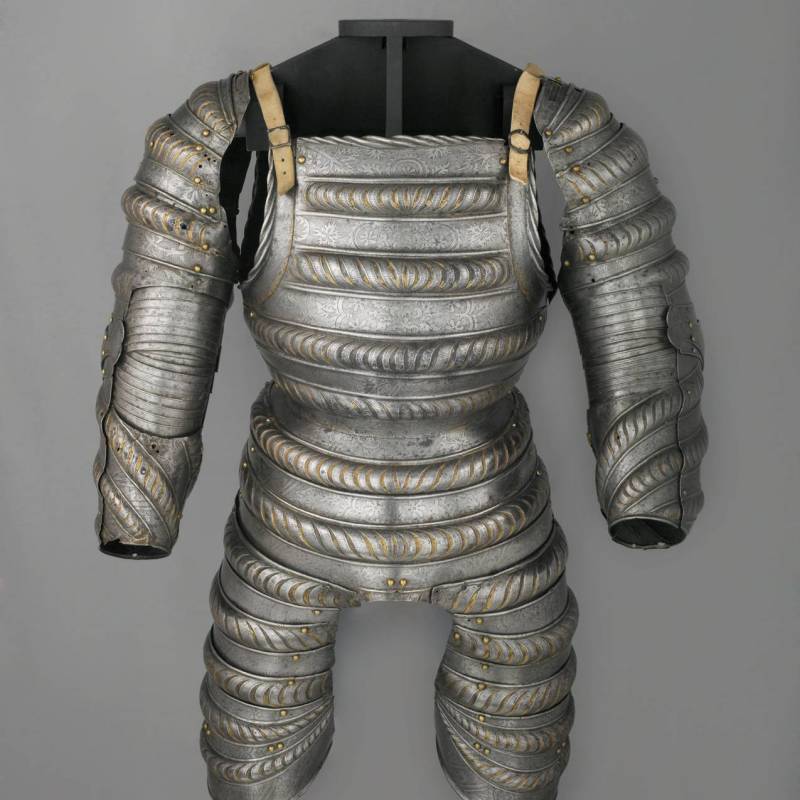
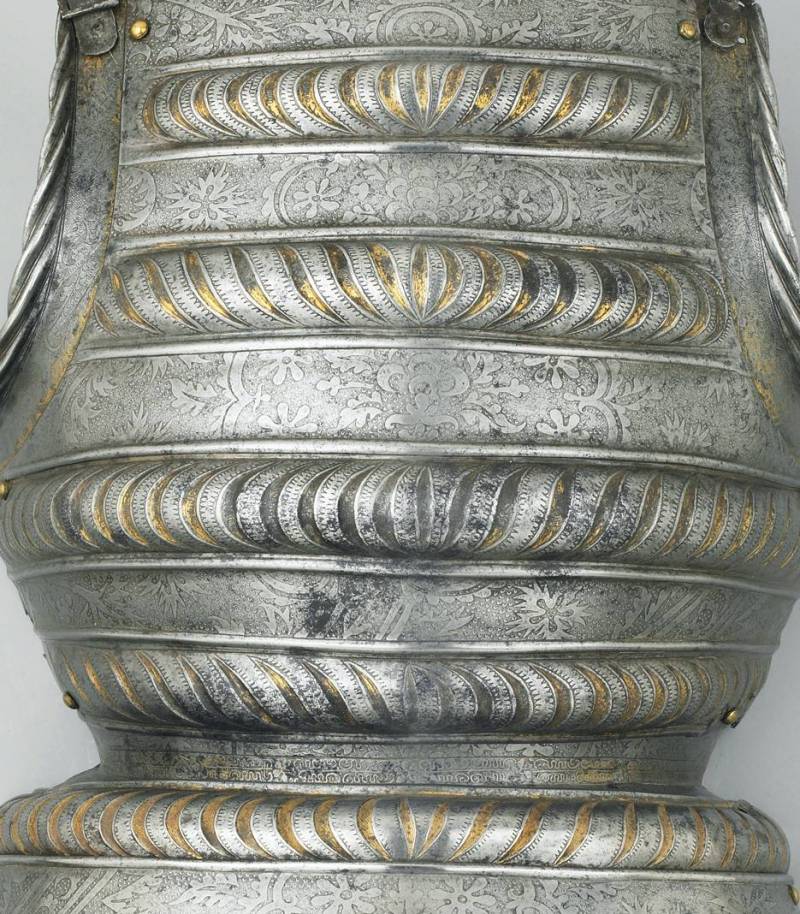
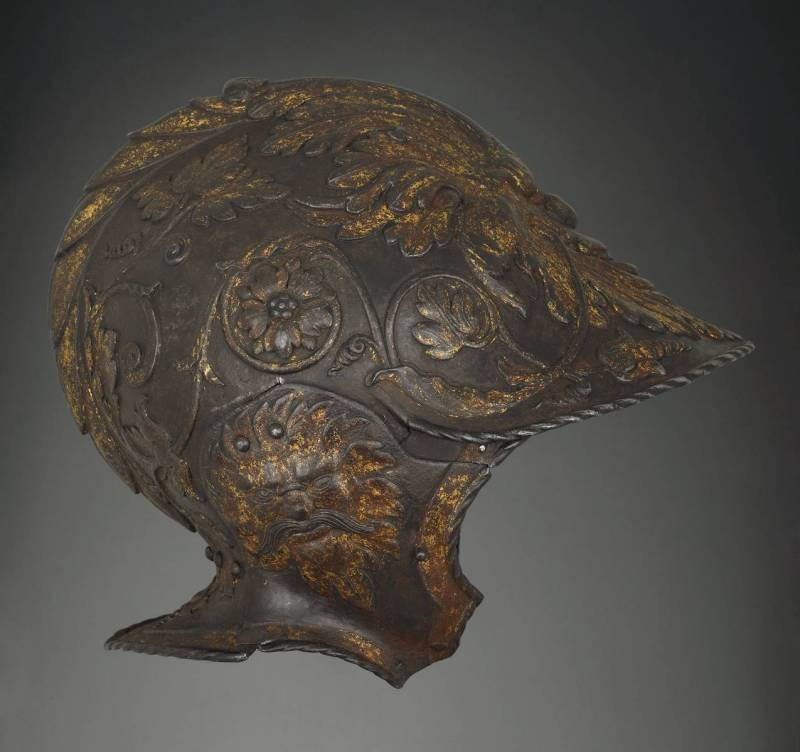
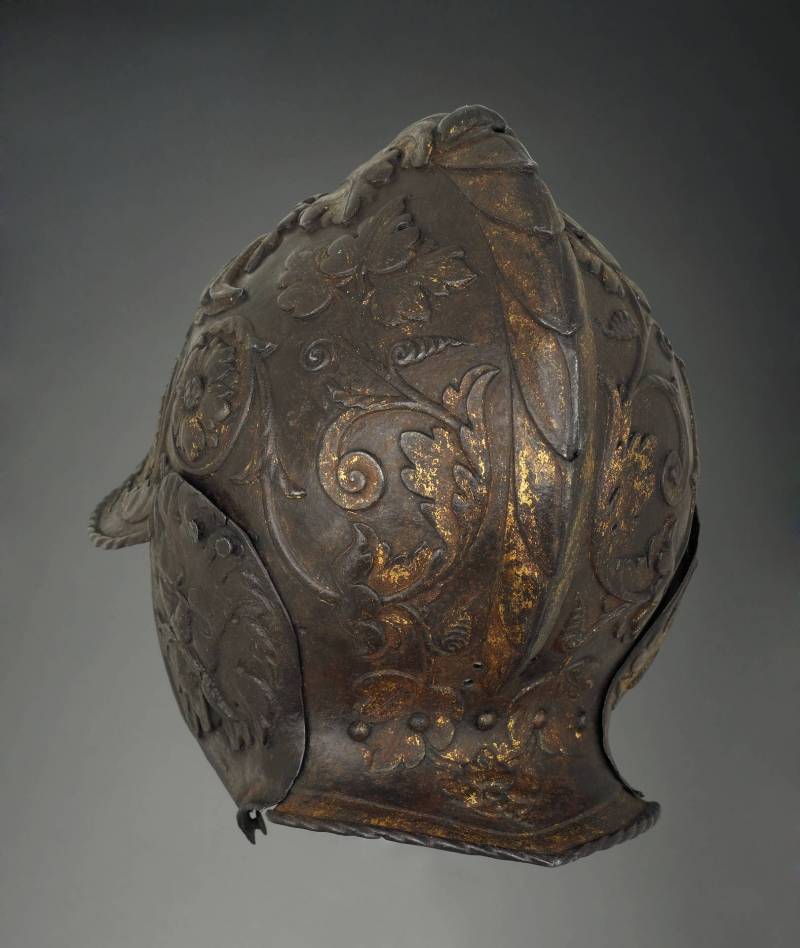
Information